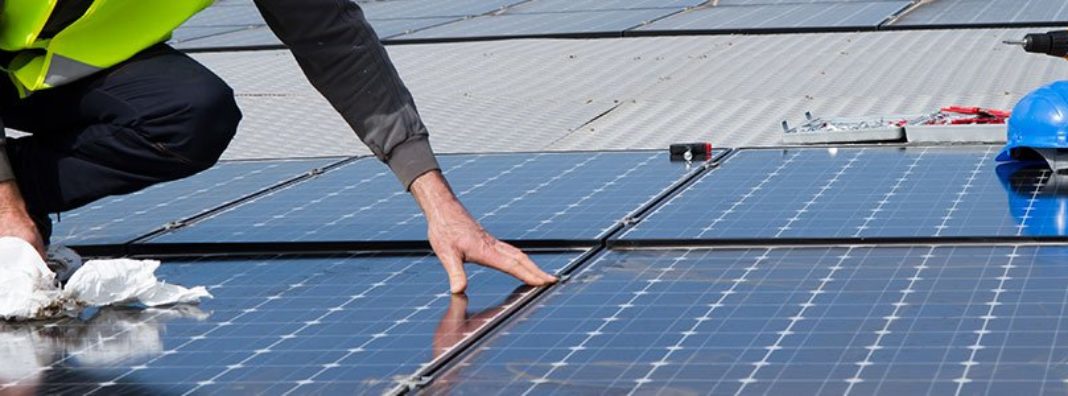
President Trump recently imposed a steep tariff on imported solar panels, one of many steps toward implementing the protectionist trade policies he campaigned on in 2016. The tariff has received both support and criticism from proponents of solar power, dividing an industry that imports 80 percent of its inputs from foreign producers. Although Trump sided with those in favor of the tariff believing it would protect the U.S. solar industry, it is more likely that it will hurt both the solar industry and energy consumers.
The 30 percent tariff is intended to protect domestic solar panel producers. That protection will come at the cost of a solar industry that has been growing rapidly over the past decade, thanks in part to the availability of less expensive solar panels from foreign markets. The vast majority of that growth is occurring in the development, installation and distribution sectors of the industry.
Many solar advocacy groups have been quick to highlight the negative effects this tariff could have on the solar industry. A news release from the Solar Energy Industries Association, the largest solar industry trade association, claims the tariff will lead to a loss of as many as 23,000 jobs and billions of dollars in investments. A separate analysis from Hugh Bromley of Bloomberg New Energy Finance does not provide specific numbers, but estimates that “downstream job losses would almost certainly exceed any manufacturing gains.”
Tariffs like those placed on imported solar panels are essentially a tax on consumers, forcing them to pay more money for a good they could otherwise have purchased at a lower price. As distinguished economist Gordon Tullock noted long ago, tariffs are essentially government mandates that force an industry to use less efficient methods of production.
SolarWorld and Suniva, two foreign-owned solar companies with manufacturing operations in the United States, have praised the president’s decision. Both companies were part of a petition filed last May with the U.S. International Trade Commission (ITC) alleging that they were facing “serious injury” from foreign competition.
This past October, the ITC submitted its recommendations for dealing with foreign competitors. Citing evidence of significant harm to domestic producers due to cheap imports, the ITC recommended imposing tariffs on imported solar panels. Those recommendations take into account the needs of SolarWorld and Suniva, but at the expense of the broader economy.
Although they benefit some domestic producers, tariffs tend to make an economy less efficient and make consumers worse off.
In fact, in 2017 the ITC found that removing all significant import restraints, including tariffs, would increase annual U.S. welfare by $3.3 billion per year by 2020.
Rick Perry, President Trump’s secretary of energy, has come out in support of the tariff. In an interview with Fox Business, Perry declared, “You want to compete against the United States? Bring it! … But don’t subsidize in a way that’s unfair.”
His statement highlights the complicated nature of government support for solar and the policies that drive the industry. On one hand, Perry is condemning foreign competitors for their use of solar subsidies. On the other hand, he mentions nothing about the significant financial support the American government already gives the domestic solar industry every year or the convoluted regulatory processes that simultaneously drives up costs.
Financial support in the form of subsidies, loan guarantees and tax credits provides billions in funding for solar producers every year. Policies like renewable portfolio standards and net metering create artificial demand for solar energy in many states by mandating or incentivizing the adoption of solar electricity production and requiring utilities to credit solar homeowners higher-than-market prices for any excess electricity they produce.
At the same time, unnecessary red tape is driving up the cost of installing solar power. The U.S. Office of Energy Efficiency and Renewable Energy estimates soft costs, which include permitting, installation and administrative fees, account for 64 percent of the total cost of a solar energy system. Solar companies must deal with more than 3,000 utilities and 18,000 different jurisdictions across the country, all of which may have different requirements for solar systems.
Instead of imposing more tariffs, lawmakers should be working to reduce the costs of regulatory compliance. Eliminating red tape and reducing soft costs will contribute to a healthier, more robust solar market. It will also reduce the industry’s reliance on federal financial support, which currently helps to offset the regulatory costs of buying, permitting and installing solar systems. These regulatory changes would likely lead to increased innovation and lower costs, benefiting all electricity consumers across the United States.


 Inside Sources
Inside Sources